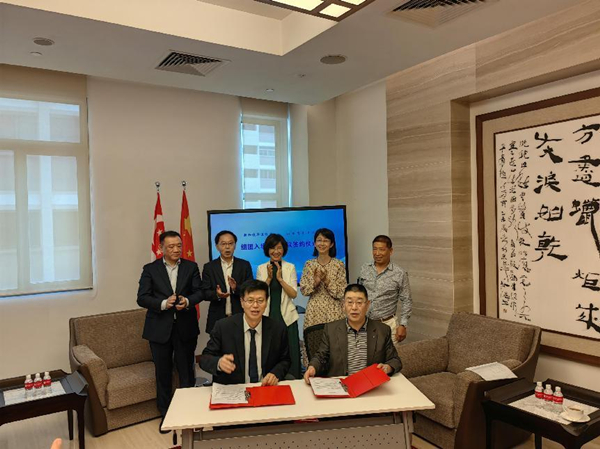Shanxi promotes culture, tourism profile in Singapore
Updated: 2023-04-10

The Shanxi Business International Travel Service Agency signs a tourism enterprise cooperation agreement with Singapore Huayun Tourism Co at a culture and tourism promotion event of North China’s Shanxi province held in Singapore on April 8. [Photo provided by Shanxi Culture and Tourism Comprehensive Media Center]
A culture and tourism promotional event of North China's Shanxi province was held in Singapore on April 8, furthering exchanges and cooperation between China and Singapore.
Xiao Jianghua, director of the China National Tourist Office in Singapore; Wang Aiqin, director-general of the Shanxi Department of Culture and Tourism; Ma Xiaomin, deputy director of the Foreign Affairs Office of Shanxi Provincial Government; Qin Wen, cultural counselor of the Chinese Embassy in Singapore, and Chan Soo Sen, former minister of Singapore, attended the event.
To fully display its rich historical, cultural and tourist attractions and attract more overseas Chinese and international tourists to the province, Shanxi broadcasted promos, held on-site promotions, presented tourist attraction tickets for free, and distributed publicity materials during the event.
The Shanxi Business International Travel Service Agency signed a tourism enterprise cooperation agreement with Singapore Huayun Tourism Co, and the latter will organize a trip to Shanxi on June 1.
To strengthen culture and tourism cooperation and exchanges with Southeast Asian countries and regions, Shanxi will visit Thailand and Malaysia to hold promotional events after the event in Singapore.
In recent years, Shanxi's tourism infrastructure has been improving rapidly. Shanxi is home to seven civil aviation airports, has opened 236 domestic and foreign air routes, and has convenient highway and high-speed railway access across the province.
Southeast Asian countries have always been important tourist source markets for Shanxi, and the province has combined its own cultural tourist attractions and developed travel routes and tourist products suitable for tourists from Southeast Asian countries.



